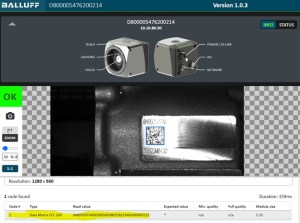In the days of Henry Ford – when you could get a car in any color as long it was black – the assembly line involved grabbing a part and putting it on the car. Today, there are literally thousands of iterations of car options, drastically increasing the need for tracking and traceability of all parts that go into the cars. How do you ensure that the components going into vehicles are the correct ones?
 Limitations of traditional barcode stickers
Limitations of traditional barcode stickers
The answer is ever-evolving. At first, automotive companies were printing off one-dimensional barcodes on stickers – a time-consuming, labor-intensive, and often wasteful process. It was necessary for an individual to print a stack of stickers hoping that they were correct and in the right order, manually put them on the parts, and hope they wouldn’t fall off. Unfortunately, many times they did fall off, leaving the operators without a way to track the parts. And once the part hit the assembly line, the operator had to manually scan the barcode, which typically took six to 10 seconds.
The power of optical identification sensors
Modern automotive companies are automating this process with sensors for optical identification. They can reliably and precisely read both 1D and 2D bar codes. This two-step process includes:

- Using lasers (CO2 for plastic or Fiber for metal), a Direct Part Mark (DPM) is permanently etched onto the component. This DPM remains readable throughout the component's lifespan.
- Once marked, a nest is created on the component, equipped with two to four cameras. These cameras capture visible 2D data matrices or 1D sticker barcodes from up to 600mm away. All data is transmitted via IO-Link to the PLC. This process eliminates scanning errors and reduces scrap.
Advanced condition monitoring for quality and efficiency
In addition to code reading functions, advanced condition monitoring capabilities have become an essential part of ensuring quality and efficiency in automotive manufacturing. These capabilities enable the continuous monitoring of various parameters related to the components and their operational conditions. Sensors equipped with advanced condition monitoring features, such as temperature sensors, vibration sensors, humidity sensors, inclination sensors, signal quality sensors, and operating time sensors, are deployed alongside the code reading sensors.
Overall, the combination of code reading sensors and advanced condition monitoring capabilities ensures not only the correct identification and traceability of components but also enhances overall quality control, reduces downtime, minimizes scrap, and improves the reliability and performance of the final products.
Click here for more information on optical code readers with IO-Link and condition monitoring.
